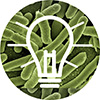May 16, 2023 (Nanowerk News) Urbanization and industrialization have led to escalating environmental issues, with dye wastewater, due to its high toxicity, posing a significant challenge. Traditional treatment methods, including physical, biological, and chemical approaches, are inadequate due to inefficiencies, high energy consumption, and incomplete remediation. Therefore, there's a pressing...
Novel AI-based software enables quick and reliable imaging of proteins in cells
May 16, 2023 (Nanowerk News) Max Planck researchers from Dortmund programmed a tool that accurately recognises and picks proteins in electron cryo-tomography, substituting troublesome hand selection. They report their findings in Nature Methods ("TomoTwin: generalized 3D localization of macromolecules in cryo-electron tomograms with structural data mining"). “TomoTwin paves the way...
Simulation provides images from the carbon nucleus
May 15, 2023 (Nanowerk News) What does the inside of a carbon atom’s nucleus look like? A new study by Forschungszentrum Jülich, Michigan State University (USA) and the University of Bonn provides the first comprehensive answer to this question. In the study, the researchers simulated all known energy states of...
Seeing electron orbital signatures
May 15, 2023 (Nanowerk News) No one will ever be able to see a purely mathematical construct such as a perfect sphere. But now, scientists using supercomputer simulations and atomic resolution microscopes have imaged the signatures of electron orbitals, which are defined by mathematical equations of quantum mechanics and predict...
Astronomers observe the first radiation belt seen outside of our solar system
May 15, 2023 (Nanowerk News) Astronomers have described the first radiation belt observed outside our solar system, using a coordinated array of 39 radio dishes from Hawaii to Germany to obtain high-resolution images. The images of persistent, intense radio emissions from an ultracool dwarf reveal the presence of a cloud...
With formic acid towards CO2 neutrality
May 15, 2023 (Nanowerk News) New synthetic metabolic pathways for fixation of carbon dioxide could not only help to reduce the carbon dioxide content of the atmosphere, but also replace conventional chemical manufacturing processes for pharmaceuticals and active ingredients with carbon-neutral, biological processes. A new study (Nature Communications, "Engineering a...
Webb finds water, and a new mystery, in rare main belt comet
May 15, 2023 (Nanowerk News) NASA’s James Webb Space Telescope has enabled another long-sought scientific breakthrough, this time for solar system scientists studying the origins of Earth’s abundant water. Using Webb’s NIRSpec (Near-Infrared Spectrograph) instrument, astronomers have confirmed gas – specifically water vapor – around a comet in the main...
Achieving ultrahigh-density information storage with self-rolling ferroic oxide films
May 15, 2023 (Nanowerk Spotlight) Ferroelectric memory, a type of nonvolatile memory, offers significant advantages in terms of speed, power efficiency, and durability, making it a promising candidate for next-generation memory technology. To meet the growing demand for higher data storage density in ferroelectric memories, researchers have developed a novel...
Carbon-based cathodes impact biofilm composition and performance in soil microbial fuel cells
May 14, 2023 (Nanowerk News) Cathode materials play a significant role in the performance of microbial fuel cells. In this study, researchers compared the performance of membrane-free air-cathode soil microbial fuell cells (SMFCs) using four different cathodes: carbon cloth, Pt-doped carbon cloth, graphite felt, and an innovative Fe-doped carbon nanofibers...
Nanotechnology Now – Press Release: Researchers at Purdue discover superconductive images are actually 3D and disorder-driven fractals
Home > Press > Researchers at Purdue discover superconductive images are actually 3D and disorder-driven fractals Abstract:Meeting the worlds energy demands is reaching a critical point. Powering the technological age has caused issues globally. It is increasingly important to create superconductors that can operate at ambient pressure and temperature. This...










